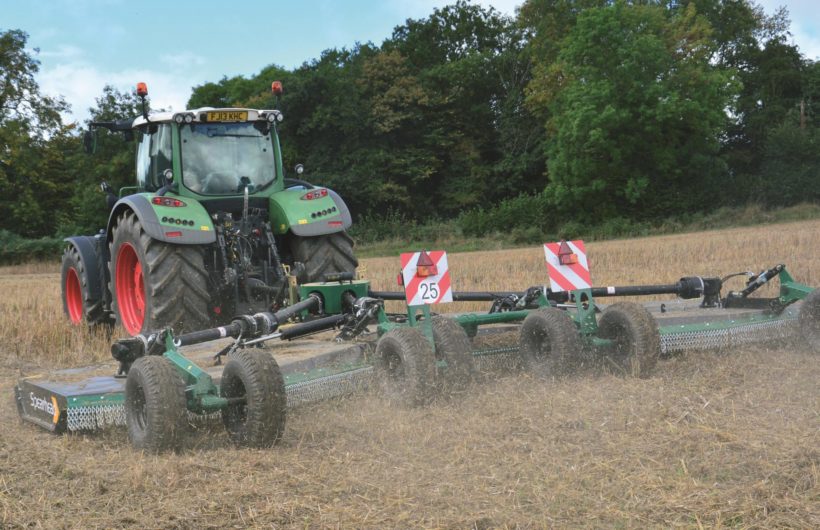Stubble Management – 10 Years On
It is now more than 10 years since Spearhead developed the first rotary mulcher designed to chop stubble residue after harvest. Following the creation of this machine, the Stubble Management principles were established in an attempt to promote better field-hygiene.
What is Stubble Management?
Stubble Management is a process of increasing the decomposition pace of stubble residues that remain on the field following harvest. With the correct approach Stubble Management will support the development of optimum soil conditions for the following season’s crop.
Stubble Management is carried out using the Stubble Master 500 or 730 with respective 5.0 and 7.3 metre working widths. The patented knife system Star Cut performs a precise pulverization of the stubbles whilst benefiting from a very low power requirement. The suction power of the specialist blade system will mix the chopped and mulched stubble residues with dust which helps start the decomposition process immediately.
Faster decomposition reduces the transfer of fungus and disease whilst at the same time as controlling the release of nutrients back in to the soil. Furthermore pesticide consumption is also reduced as better nitrogen utilization is maintained.
What are the benefits of good field-hygiene?
Faster Decomposition:
The decomposition of crop stubble residues is accelerated when chopped stubble is mixed with dust and soils, encouraging microorganisms to flourish. Faster decomposition results in the controlled release of nutrients from the decaying organic material which in turn reduces the transfer of fungus and disease.
Activation of waste seeds:
Stubble Management is especially effective in rapeseed for the activation of waste seeds. By chopping the stubble, a productive carpet is formed that retains the exact moisture that the spilled rapeseeds need to become active and therefore benefitting the development of crops in the following season.
Faster decomposition:
Microorganisms flourish when the crop stubble residue is mixed with dust and soils which encourages faster decomposition. This process allows a controlled release of nutrients from the decaying organic material which reduces the transfer of fungus and disease.
Pests and diseases:
Stubble Management is proven to be successful in the management of pests including the ‘Death Watch Beetle’ one of the world’s most common crop destroying insects. The Stubble Master chops across and flares the lower stalk of the maize plant destroying the habitat that the beetle lives within.
Clean-up of the field:
Where straw and stubble residues are left lying on the field after combine, crossing the area with the Stubble Master will give a far superior chop, mulch and spread.
Management of grass seed:
The Spearhead Rotary Mower has been previously used to manage grass seed fields, and the Stubble Master is no exception – it´s just got even better. Three years ago the newest generation of the Star Cut blade system was introduced and it is now possible to cut extremely close to the ground to manage grassland with a far better mulch than ever before.
Long stubble after the combine:
By raising the header of the combine by 10 centimetres the capacity of the machine is increased by 20% which can be advantageous in years where a lot of rainfall is experienced.
Working hours and diesel use:
The patented knife system, Star Cut, is highly regarded for the pulverisation and distribution of the chopped material. With a forward speed of approximately 15 km per hour there is a huge capacity and a major time saving during the harvest process. Diesel use is approximately 2.5 litres per hectare for a normal stubble management process.
More Information:
For more information on the Stubble Master range please visit our product page https://www.spearheadmachinery.com/machinery-category/rotary-mulchers/
